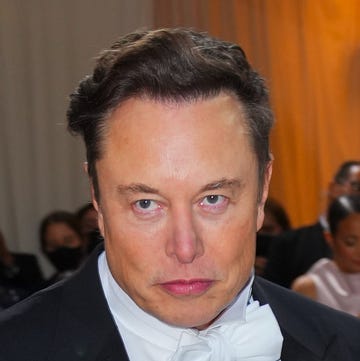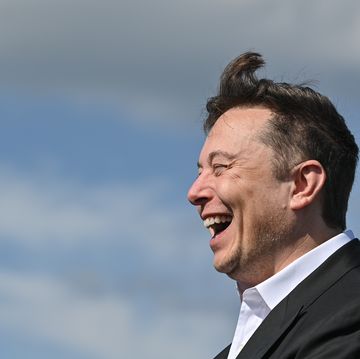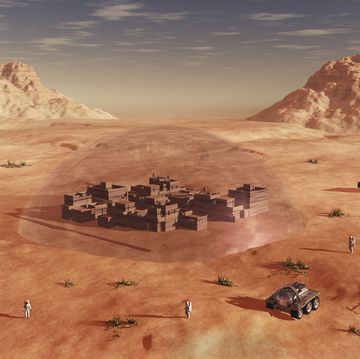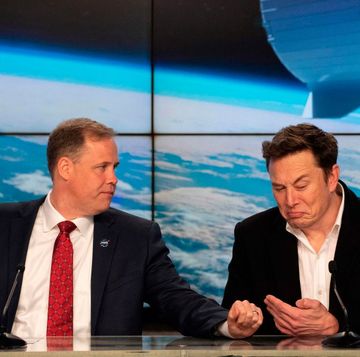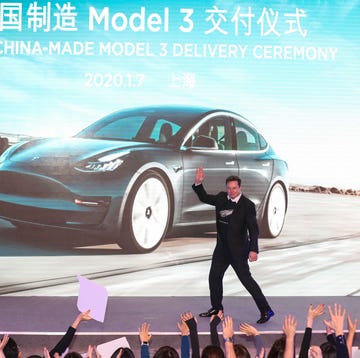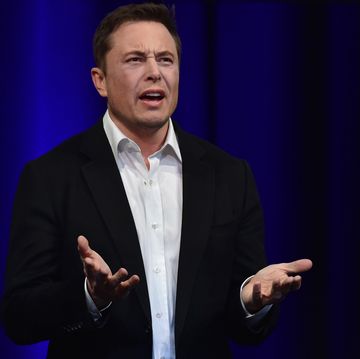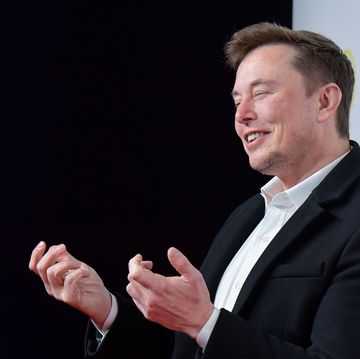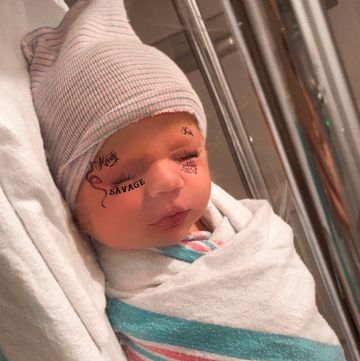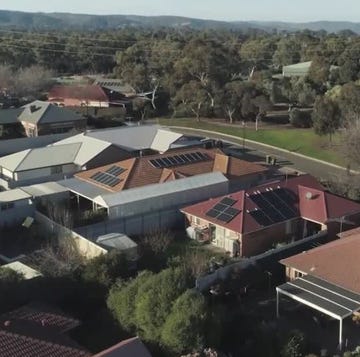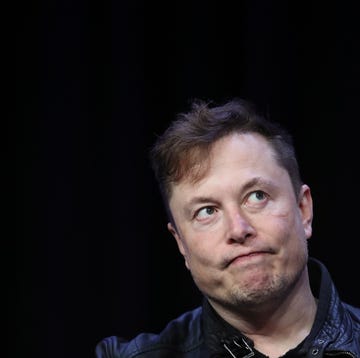The road to SpaceX's future spaceport ends among dunes and beach grass at the edge of the Gulf of Mexico. Boca Chica Beach, near Brownsville, Texas, is the improbable location where SpaceX CEO and billionaire Elon Musk aims to make history. The company now launches its rockets from existing sites like NASA's Kennedy Space Center at Cape Canaveral, Florida, and Vandenberg Air Force Base in California. Boca Chica Beach would be different: SpaceX wants to transform this empty, wind-swept patch of South Texas into the world's first commercially built, owned, and operated spaceport that can launch to orbit—and beyond.
The company says that within 18 to 24 months of breaking ground, rockets could rise here carrying satellites off the planet. And if Musk has his way, this is the location from which human beings will travel to Mars. He says he'll be one of the first travelers.
The view from the beach doesn't help make the dream seem more real. SpaceX says it could be launching rockets here by the end of 2016. But as of early February, when I visited, there were no visible signs of construction.
So, when will it start? Not as soon as locals wanted—or expected.
"We think it will probably be in the summer," says Brownsville Economic Development Council executive vice president Gil Salinas. Asked if the spaceport work was on schedule, Salinas responds: "Kind of." He described progress as "more along the lines of a long-term process, with momentary pauses."
SpaceX says that quiet progress is being made. "For a project of this scale, there is a significant amount of engineering, design, and environmental work that must be completed prior to heavy construction," says SpaceX spokesman Phillip Larson. "While not immediately visible, this work is well under way."
Spaceport from Scratch
The FAA gave SpaceX authority to build in Brownsville in July 2014. SpaceX officials tell PM that the company remains on track for operations here by late 2016, despite the fact that they're still not moving dirt.
Launch pads are understated engineering marvels. They are more just a slabs of steel-reinforced concrete ringed by protective lightning towers. A network of liquid oxygen lines and flame ducts will weave through the thick concrete.
SpaceX is modeling this Texas pad after the one it built in Florida, which PM visited in 2011. But a new site means new surveying, new environmental impact statements and new infrastructure. Building at Cape Canaveral, home to space launches for decades, is vastly different than building one in the now-empty sand dunes.
Besides the launch pad, which are called "hardstands" by professional launch types. SpaceX will need facilities to assemble and inspect the rocket as it lays horizontal. The rocket then slides on rails to the launch pad, and then is stood up vertically for launch.
Blast-off or bust
Despite SpaceX's record of launch accomplishments and healthy manifest of clients, it's not hard to find skepticism about Musk's bold plans down here—lawyers, bartenders and Border Patrol Agents each offered doubts when aslked about the lack of visible progress.
Spaceports don't have great reputations currently. That's partly because spaceports have morphed into boondoggles before—just ask residents in Truth and Consequences, NM.
That's the site of Spaceport America, home to the groundbreaking space tourism company Virgin Galactic. Taxpayers ponied up $220 million to help create the center on the promise that suborbital spacecraft would fly there. Year after year, though, Virgin Galactic did not fulfill those promises, and a fatal testing accident last year could push back Virgin's timetable even more. Now state legislators from both sides of the aisle are debating whether to sell it. "I'm beginning to fear that the spaceport is a white elephant," said Sen. Mark Moores, R-Albuquerque at a recent hearing.
The project in Texas is superficially similar to Spaceport America—a billionaire with a dream about commercializing space—so that failure has cast a pall over SpaceX's South Texas project. But the companies are quite different.
Compared to Virgin's comparatively large subsidy to build in New Mexico, state and locals have granted just $15 million in incentives to SpaceX. The company says it is investing $100 million of its own money into the spaceport. More importantly, SpaceX has a working launch vehicle, the Falcon 9, that launches cargo to the International Space Station and satellites into orbit. Compared to Virgin Galactic, SpaceX's business model is mature.
SpaceX has grand plans for Brownsville, whose southern location means the earth's spin gives rockets an extra boost to get payloads into orbit. It starts with launching satellites for commercial clients. (NASA will always want to launch its cargo and astronauts from Cape Canaveral, and the military will want its satellites to leave from there or Vandenberg Air Force Base in California. SpaceX currently operates in both locations.)
But it doesn't end there. SpaceX plans to build and fire Falcon Heavy launch vehicles, the most powerful rockets ever built, from Texas twice a year.
Locals hope to someday witness history—but first they'll have to wait for the earth-movers show up. They know, more than most, that plenty of dirt must fly before rockets ever do.
Joe Pappalardo is a contributing writer at Popular Mechanics and author of the new book, Spaceport Earth: The Reinvention of Spaceflight.



